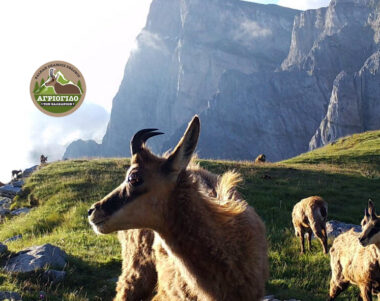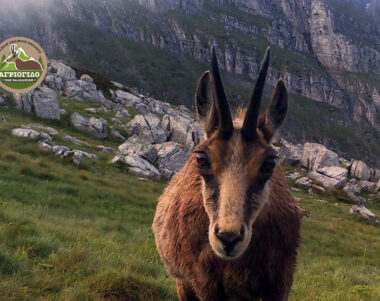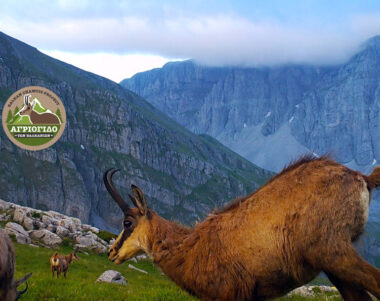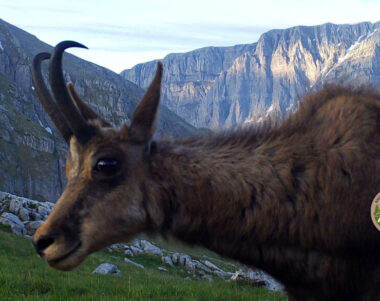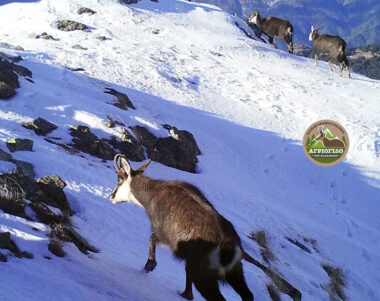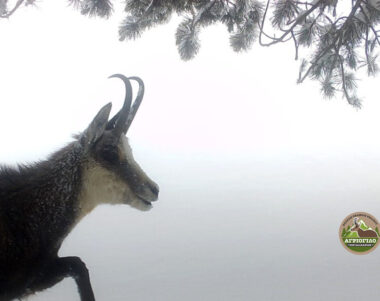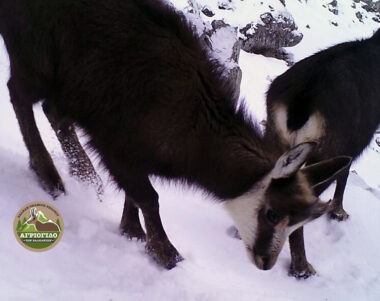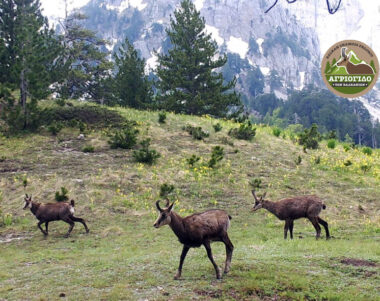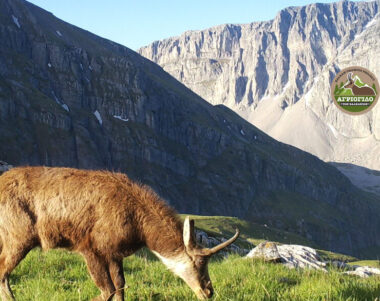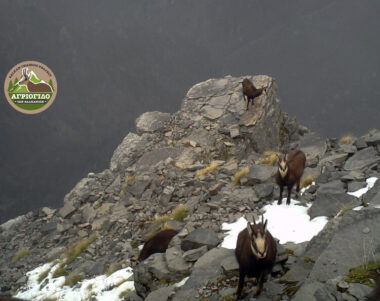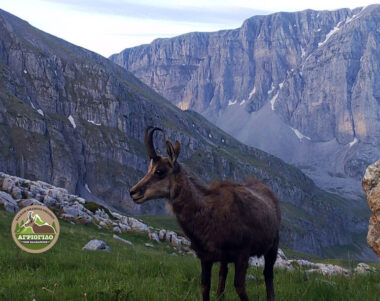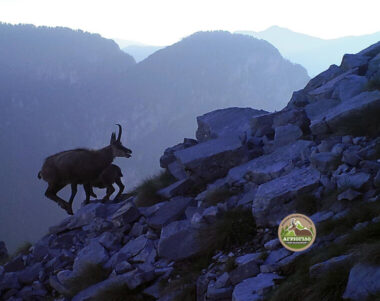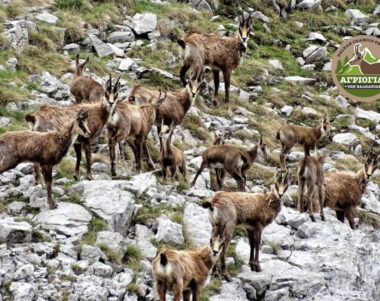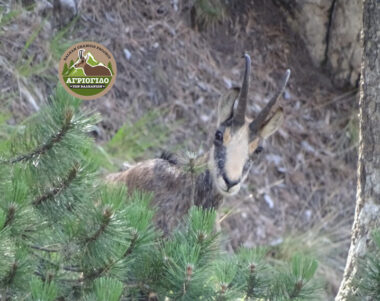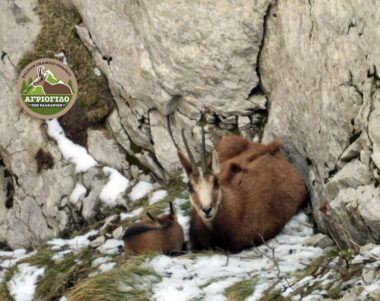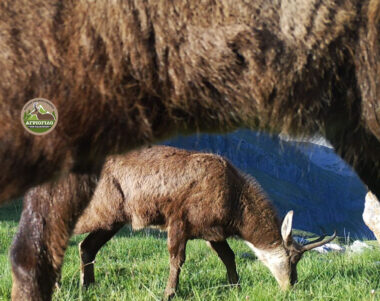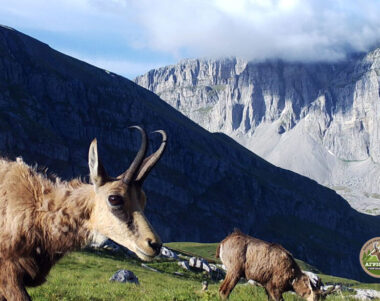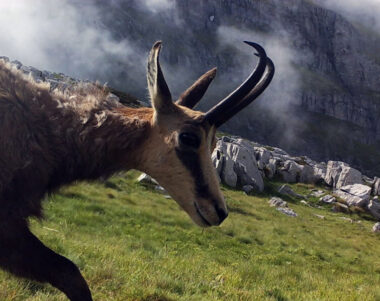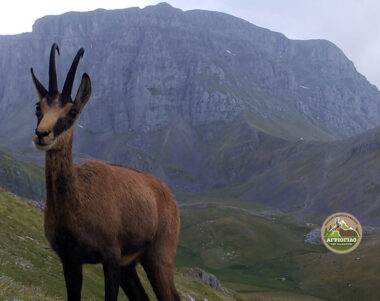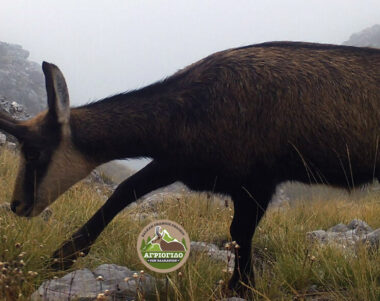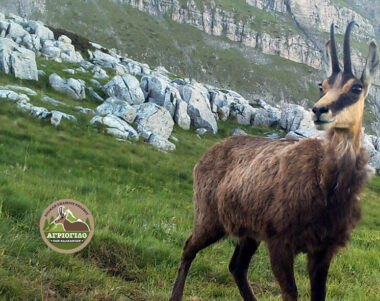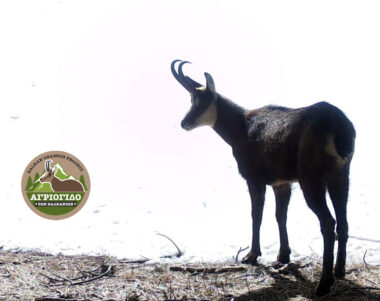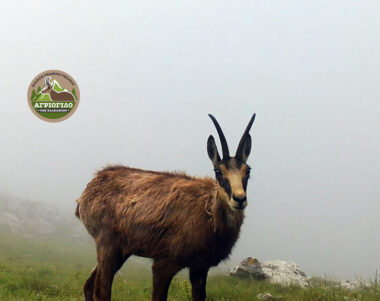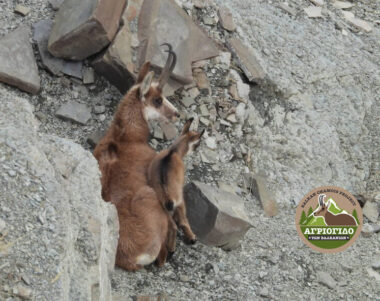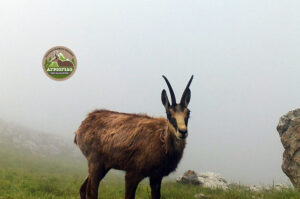Description & External Characteristics
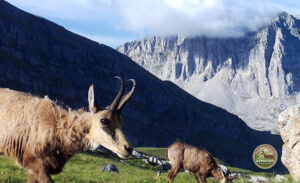 At first glance, the chamois (Rupicapra rupicapra) resembles a goat. However, the chamois has a more compact body structure, taller and stronger legs, and a longer neck. It also possesses unique morphological and behavioral traits adapted to high-altitude environments. Besides, phylogenetically, the chamois is distinct from goats and sheep.
At first glance, the chamois (Rupicapra rupicapra) resembles a goat. However, the chamois has a more compact body structure, taller and stronger legs, and a longer neck. It also possesses unique morphological and behavioral traits adapted to high-altitude environments. Besides, phylogenetically, the chamois is distinct from goats and sheep.
Both males and females bear upright, ebony-colored horns that curve backward, resembling hooks. These horns grow throughout the chamois’s life, with the most significant development occurring in the first three years.
Regarding its fur, the chamois has a distinctive white facial coloration, adorned with two dark stripes that start from the ears and end at the nostrils, giving the impression that the animal is wearing a mask.
The chamois exhibits seasonal fur variations.
In winter, its coat becomes denser –the males exhibit a nearly black coloration, while females display a very dark brown hue. In summer, the coat is lighter in color. However, certain areas—such as the face, tail, and underbelly—retain a white or light beige hue year-round.
Παρουσιάζει μια εποχιακή διαφοροποίηση του τριχώματός του σώματός του, με εξαίρεση την περιοχή του προσώπου, της ουράς και της κοιλιακής χώρας όπου τα άτομα του είδους διατηρούν το λευκό (ενδεχομένως ανοιχτό μπεζ) χρωματισμό. Το χειμερινό τρίχωμα, σε σύγκριση με το καλοκαιρινό, είναι πυκνότερο και τα αρσενικά εμφανίζουν μια σχεδόν εντελώς μαύρη απόχρωση, ενώ τα θηλυκά πολύ σκούρα καφετιά. Το καλοκαιρινό τρίχωμα είναι καφετί προς μπεζ και συνήθως –σε αντίθεση με το χειμώνα- τα αρσενικά είναι περισσότερο ανοιχτόχρωμα.
The chamois exhibits slight sexual dimorphism. Depending on the subspecies, individuals typically weigh between 22 and 62 kilograms (rarely, more than 50 kilograms).
 Males are heavier (8-12 kilograms) than females of the same age.
Males are heavier (8-12 kilograms) than females of the same age.
The height, measured at the withers, ranges from 75 to 85 cm in males and from 65 to 75 cm in females.
The total body length of the chamois, measured from the tip of the head to the base of the tail, varies between 115 and 140 cm in males and between 110 and 130 cm in females.
